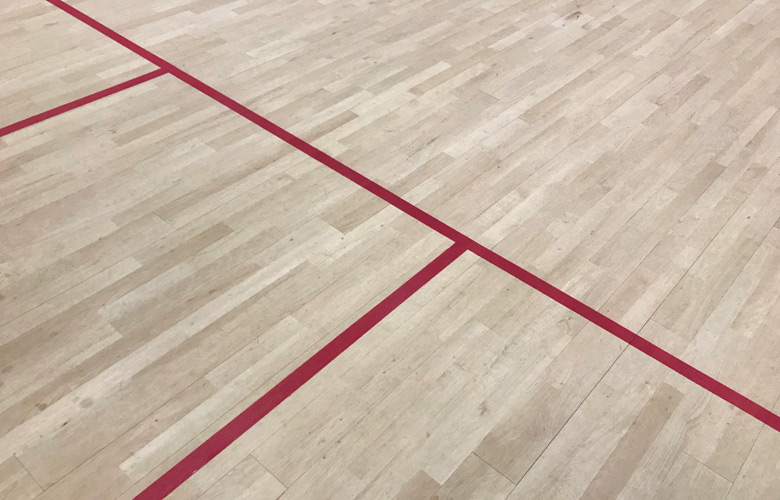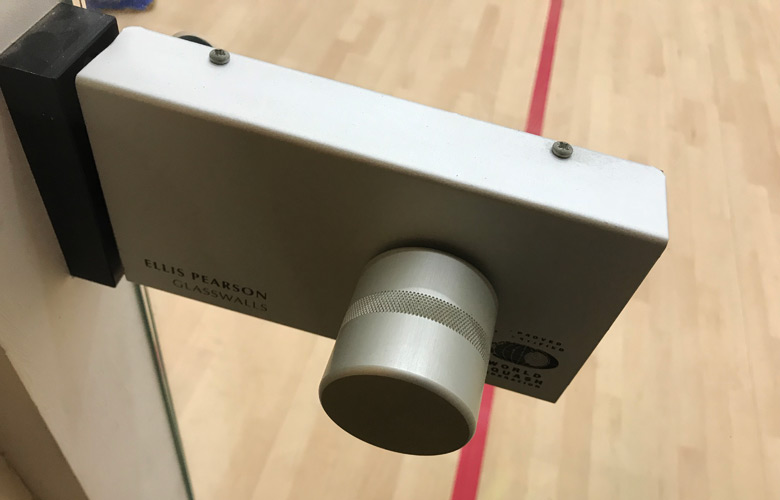
The game of squash was developed based on other pre-existing racquet sports, especially Racquets and Fives. Squash itself was developed at Harrow School, in the early 19th Century, when the boys noted that puncturing a racquets' ball caused it to squash when hitting the wall, allowing a greater variety of shots.
By the end of the century it had spread to Britain's other private schools as well as Oxford and Cambridge universities.
In 1908 a squash sub-committee of the Tennis and Rackets Association was formed to regulate the sport, followed in 1928 by the British Squash Rackets Association.
Squash is a fast-moving game that requires skill, speed and supreme fitness. The ball can reach speeds of up to 170mph and players can burn off up to 1000 calories per hour of squash - higher than most other sports.
• The basic principle is to keep hitting the ball against the front wall until your opponent cannot get it back any more.
• Players must keep one foot in the service box as they serve.
• The ball must hit the front wall between the service line and the out line, and land in the area behind the short line on the opposite side of the court.
• For the remainder of the rally, players must hit the wall above the board and below the out line.
• The ball is only allowed to hit the floor once before each shot, but it can hit as many walls as the player wants.
• If a player fails to hit the ball before it bounces twice, hits the ball into the floor before it hits the front wall, or hits it outside the out line, then they lose the rally.
• A player can also lose a rally if the ball hits them or their clothing before they strike the ball.
Players usually spin a racket to decide who commences serving at the start of the match and this player starts the first rally by electing to serve from either the left or right service box (though it is most generally from the right).
For a legal serve, one of the server's feet must be in that box and, after being struck by the racket, the ball must strike the front wall above the service line and below the out line and land in the opposite quarter court, unless volleyed by the receiver.
The players then take turns hitting the ball against the front wall (referred to as 'rallying'). The ball may be volleyed (hit whilst still in the air) or after its first bounce and before the second. To be considered 'good', the ball must reach the front wall below the 'out' line and above the 'board' or 'tin', before touching the floor. A ball landing on either the out line or the line above the tin, contrary to tennis, is considered to be out. The ball may also be struck against any of the other three walls before reaching the front wall. Shots that are first played off the side or back walls are referred to as 'boasts' or 'angles'.
The rally continues until a player is unable to return his or her opponent's shot or makes a mistake (e.g. hits the ball 'out', or hits it after its second bounce, or onto the floor, 'board' or 'tin'), or a 'let' or 'stroke' is awarded by the referee for interference (see Let or Stroke).
Squash developed from at least five other sports involving racquets, gloves, and balls having roots in the early 1500s in France. It's stated that “Squash, with its element of hitting balls against walls, was for entertainment. For example, boys and girls slapped balls in narrow alleys and streets”. Religious institutions in France, such as monasteries, developed a similar game. Monks used gloves that were webbed to hit balls against a fishing net strung across the middle of the courtyards of the monasteries. This developed the early “racquets” used in tennis and squash. Then in late fifteenth century, tennis was developed and spread to other European nations.
The next major development of squash took place in England where the game of "racquets" was developed in Fleet Prison, a debtor’s prison. Similar to tennis, it involved racquets and balls, but instead of hitting over a net as in tennis, players hit a non-squeezable ball against walls. A variation of rackets that also lead to the formation of squash was called fives, similar to handball. Fives was essentially the game of racquets, without racquets. (The ball was hit with the hand.) It is played against a wall or walls.
Squash was first referred in 1581 by an English schoolmaster. In 1856, this rebounding ball game was played in an enclosed court. This court was almost similar to the courts of rugby and almost similar to some private houses.
Squash rackets are initially made out of laminated timber. Later on in the 1980s, it was made out of metals such as Kevlar, boron, titanium and graphite. There was a shift from natural strings to synthetic strings.
These games gained popularity and were further developed in schools, notably Harrow Schoo in England. The first courts built at this school were rather dangerous because they were near water pipes, buttresses, chimneys, and ledges. The school soon built four outside courts. Natural rubber was material of choice for the ball. Students modified their racquets to have a smaller reach to play in these cramped conditions.
In the 1900s the game increased in popularity with various schools, clubs and even private citizens building squash courts, but with no set dimensions. The first squash court in North America appeared at St. Paul's School in New Hampshire in 1884. In 1904 in Philadelphia, Pennsylvania, the earliest national association of squash in the world was formed as the United States Squash Racquets Association, (USSRA), now known as US-Squash.
In April 1907 the Tennis, Rackets & Fives Association set up a sub committee to set standards for squash. Then the sport soon formed, combining the three sports together called “Squash”. It was not until 1923 that the Royal Automobile Clubhosted a meeting to further discuss the rules and regulations and another five years elapsed before the Squash Rackets Association was formed to set standards for squash in Great Britain.
The sport spread to America and Canada, and eventually around the globe. Players such as F.D. Amr Bey of Egypt dominated the courts in the 1930s, Geoff Hunt of Australia dominated the game during the 1960s and 1970s winning a record eight British Opens at the time and during the 1980s and 1990s Jahangir Khan of Pakistan won the British Open a record of ten times and Jansher Khan of Pakistan won the World Open a record of eight times.
No list of squash champions is complete without referencing the legendary Hashim Khan, winner of 7 British Open championships, and his son, Sharif Khan, winner of 12 North American Open titles. Hashim is considered one of the best athletes of all times and is the patriarch of a sports dynasty, consisting of himself, his brother, Azam, nephews Mohibullah and Gul, sons Sharif, Gulmast, Aziz, Liaquat Ali, and Salim Khan - all of whom are squash champions in their own right. Both Jahangir Khan and Jansher Khan are part of the legendary Khan dynasty begun by Hashim in the 1940s and 1950s.


211
Current Members
120
Matches per Week
41
Years of History